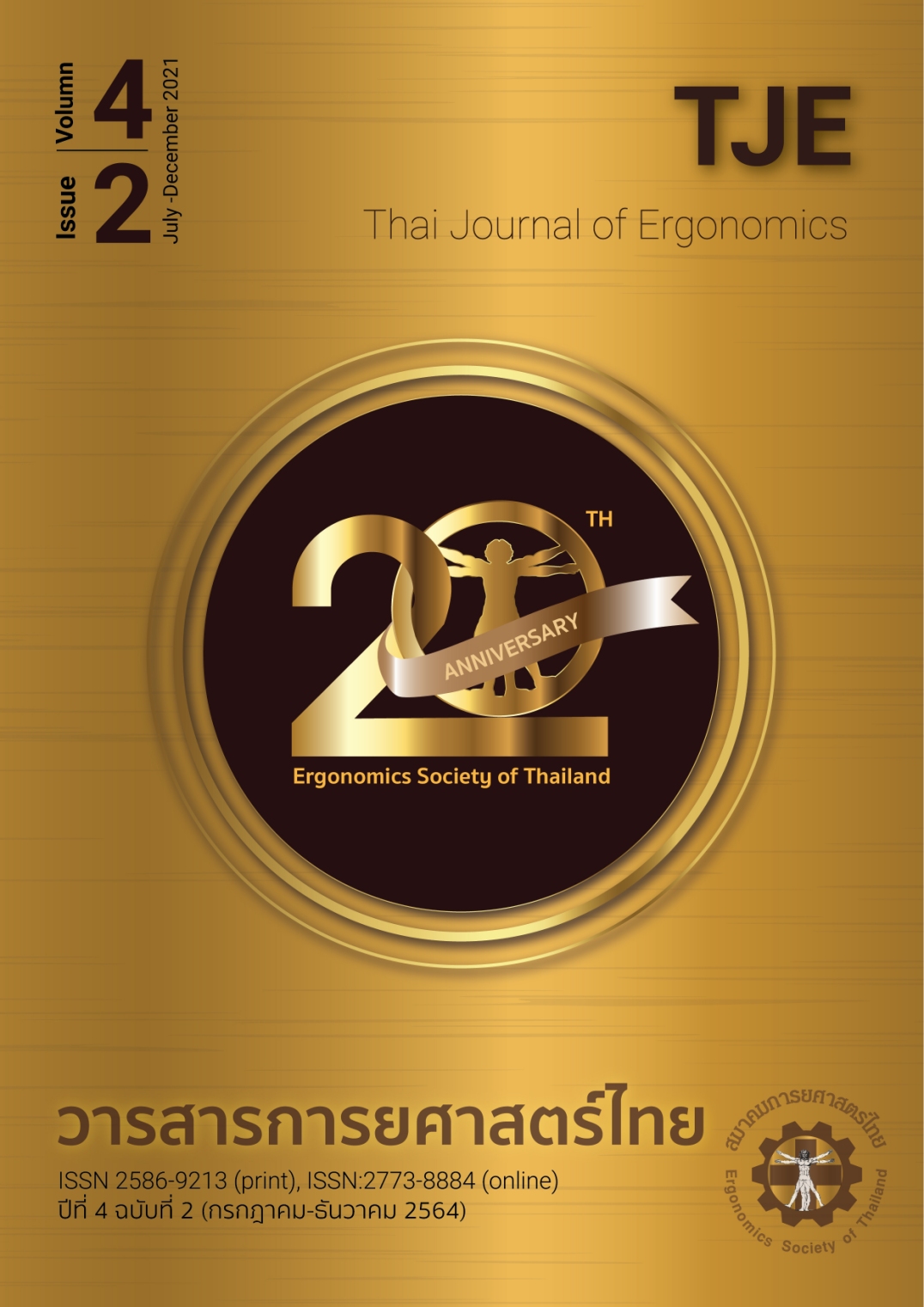Efficiency of semantic process for children’s interface
Main Article Content
Abstract
This research is an examination of the concept of process semantics representing the meaning of tasks, time, space, and navigation. In assessment of this concept, children were tested with an existing typical office mail application comparing the mailman program with the Process semantics. The office mail was the regular mail used in commercial software, while the mailman was designed for hypothesis testing. Sixty subjects did the usability testing of six tasks. When interacting with both programs, the completion times of three tasks in mailman program are faster than those in the office mail. Moreover, the number of errors with the mailman program is less than that with the office mail for all tasks. The result reflected the process semantics with the operational transparency in conjunction with the metaphor of mailman agent significantly improving children’s understanding.
Article Details
References
Krippendorff K. Product semantics: a triangulation and four design theories. Helsinki: University of Industrial Arts; 1989.
Norman DA. Some observations on mental models. In: Gentner D, Stevens AL, editors. Mental models. Hillsdale: Lawrence Erlbaum Associates Inc.; 1983. p. 7-14.
Neale DC, Carroll JM. The role of metaphors in user interface design. In: Helander MG, Landauer TK, Prabhu P, editors. Handbook of human-computer interaction. Amsterdam: North-Holland; 1997. p. 441–62.
Hurtienne J, Blessing L. Design for intuitive use-testing image schema theory for user interface design. In: Bocquet JC, editor. Proceedings of the 16th International Conference on Engineering Design; 2007 Aug 28-31; Paris, France. Scotland: The Design Society; 2007. p. 1-12.
Teaching with technology: Computers, age by age [Internet]. 2021 [cited 2021 Nov 23]. Available from: https://www.scholastic.com/teachers/articles/teaching-content/teaching-technology-computers-age-age/
Druin A, Solomon C. Designing multimedia environments for children: computers, creativity, and kids. New York: John Wiley & Sons, Inc.; 1996.
Chiu S, Koong CS, Fan SH. Icon design principles for preschoolers: implications derived from child development. Procedia Soc Behav Sci. 2012;64:228–37.
Buell RW, Norton MI. The labor illusion: how operational transparency increases perceived value. Manage Sci. 2011;57:1564–79.
Microsoft Docs. Progress bars - Win32 apps [Internet]. 2021. [cited 2021 October 6] Available from: https://docs.microsoft.com/en-us/windows/win32/uxguide/progress-bars
Developer.apple.com. Progress indicators – macOS - human interface guidelines [Internet]. 2021. [cited 2021 October 6] Available from: https://developer.apple.com/design/human-interface-guidelines/macos/indicators/progress-indicators/
Laurel B. The art of human-computer interface design. Reading: Addison-Wesley; 1990.
Bosseler A, Massaro DW. Development and evaluation of a computer-animated tutor for vocabulary and language learning in children with autism. J Autism Dev Disord 2003;33:653–72.
de Souza CS, Prates RO, Barbosa SDJ, Edmonds EA. Semiotic approaches to user interface design. In: Turner T, Szwillus G, editors. Proceedings of the SIGCHI Conference on Human Factors in Computing Systems; 2000 April 1-6; The Hague, Netherlands. New York: Association for Computing Machinery; 2000. p. 366.
Norman D. The design of everyday things: revised and expanded edition. New York: Basic Books; 2013.


